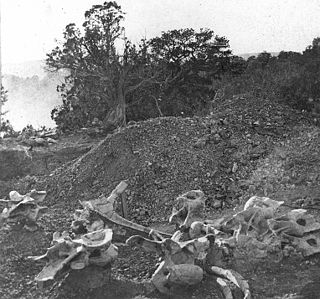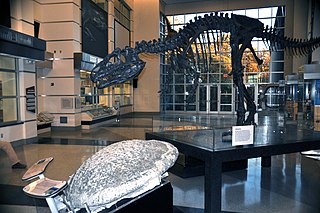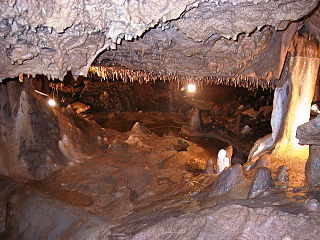Related Research Articles

Garrett County is the westernmost county of the U.S. state of Maryland. As of the 2020 census, the population was 28,806, making it the third-least populous county in Maryland. Its county seat is Oakland. The county was named for John Work Garrett (1820–1884), president of the Baltimore and Ohio Railroad. Created from Allegany County, Maryland in 1873, it was the last Maryland county to be formed.

Monroe County is a county in the U.S. state of West Virginia. As of the 2020 census, the population was 12,376. Its county seat is Union.

Chicora is a borough in Butler County, Pennsylvania, United States. The population was 1,043 at the 2010 census.

Brokenstraw Township is a township in Warren County, Pennsylvania, United States. It was formed in 1800. The population was 1,705 at the 2020 census, down from 1,884 at the 2010 census.

Lewisburg is a city in Greenbrier County, West Virginia, United States. The population was 3,930 at the 2020 census. It is the county seat of Greenbrier County.

The College of Fine Arts (CFA) at Carnegie Mellon University in Pittsburgh, in the U.S. state of Pennsylvania oversees the Schools of Architecture, Art, Design, Drama, and Music; along with its associated centers, studios, and galleries.

The Carnegie Museum of Natural History is a natural history museum in the Oakland neighborhood of Pittsburgh, Pennsylvania. It was founded by Pittsburgh-based industrialist Andrew Carnegie in 1896. Housing some 22 million specimens, the museum features one of the finest paleontological collections in the world.

Smoke Hole Caverns (SHC) is a picturesque show cave in Grant County in West Virginia's Eastern Panhandle.

Megalonyx is an extinct genus of ground sloths of the family Megalonychidae, native to North America during the Pliocene and Pleistocene epochs. It became extinct during the Quaternary extinction event at the end of the Rancholabrean of the Pleistocene, living from ~5 million to 11,000 years ago. The type species, M. jeffersonii, measured about 3 meters (9.8 ft) and weighed up to 1,000 kilograms (2,200 lb). Megalonyx is descended from Pliometanastes, a genus of ground sloth that had arrived in North America during the Late Miocene, prior to the Great American Biotic Interchange. Megalonyx had the widest distribution of any North American ground sloth, having a range encompassing most of the contiguous United States, extending as far north as Alaska during warm periods.

Miacis is a genus of extinct carnivorous mammals that appeared in the late Paleocene and continued through the Eocene. The genus Miacis is not monophyletic but a diverse collection of species that belong to the stemgroup within the Carnivoramorpha. As such, most Miacis species belong to the group of early carnivores that represent the ancestors of the modern order, the crown-group Carnivora. However, the species Miacis cognitus is placed not in the stem-group but among the Caniformia, one of the two suborders of the crown-group Carnivora.

Fort Massac was a French colonial and early National-era fort on the Ohio River in Massac County, Illinois, United States.
The Shenandoah Valley Railroad is a shortline railroad operating 20.2 miles (32.5 km) of track between Staunton and Pleasant Valley, Virginia. The railroad interchanges with CSX and Buckingham Branch in Staunton and Norfolk Southern in Pleasant Valley. The railroad was purchased from Norfolk Southern in 1993 and is currently operated by the Durbin and Greenbrier Valley Railroad.

The American Alliance of Museums (AAM), formerly the American Association of Museums, is a non-profit association that has brought museums together since founding in 1906, helping develop standards and best practices, gathering and sharing knowledge, and advocating on issues of concern to the museum community. AAM is dedicated to ensuring that museums remain a vital part of the American landscape, connecting people with the greatest achievements of the human experience, past, present and future.

Garden Park is a paleontological site in Fremont County, Colorado, known for its Jurassic dinosaurs and the role the specimens played in the infamous Bone Wars of the late 19th century. Located 10 km (6.2 mi) north of Cañon City, the name originates from the area providing vegetables to the miners at nearby Cripple Creek in the 19th century. Garden Park proper is a triangular valley surrounded by cliffs on the southeast and southwest and by mountains to the north; however, the name is also refers to the dinosaur sites on top and along the cliffs. The dinosaur sites now form the Garden Park Paleontological Resource Area, which is overseen by the Bureau of Land Management.

Dippy is a public sculpture of Dippy, or Diplodocus carnegii, on the grounds of the Carnegie Institute and Library complex in the Oakland neighborhood of Pittsburgh, Pennsylvania.

The Sinks of Gandy — also called the Sinks of Gandy Creek, or simply "The Sinks" — are a modestly celebrated cave and underground stream at Osceola in eastern Randolph County, West Virginia, United States. The Sinks are on private property within the Monongahela National Forest.

Bellefield Boiler Plant, also known as "The Cloud Factory" from its nickname's use in Michael Chabon's 1988 debut novel The Mysteries of Pittsburgh, is a boiler plant located in Junction Hollow between the Carnegie Institute of Pittsburgh and Carnegie Mellon University in the Oakland district of Pittsburgh, Pennsylvania.

The Virginia Museum of Natural History is the state's natural history museum located in Martinsville, Virginia founded in 1984. The museum has several different award-winning publications, is affiliated with the Smithsonian Institution, and has more than 22 million items. This includes the first intact stromatolite head ever found in Virginia, which is one of the largest complete 'heads' in the world, at over 5 feet in diameter and weighing over 2 tons.

The Hillman Hall of Minerals and Gems is a notable mineral and gem collection within the Carnegie Museum of Natural History in Pittsburgh, Pennsylvania. Comprising over 1,300 specimens, Hillman Hall has gained a reputation as one of the finest mineral exhibitions in the United States

Seneca Caverns is a karst show cave in Germany Valley near Riverton, West Virginia, USA. It has been commercially used since 1930. The largest room inside the cave is the Teter Hall, which is 60 feet tall by 60 feet wide in some areas.
References
- ↑ "The Clark's Cave bone deposit and the late Pleistocene paleoecology of the central Appalachian Mountains of Virginia". Bulletin of Carnegie Museum of Natural History. Carnegie Museum of Natural History. 2: 14. January 19, 1977. Retrieved October 2, 2022.